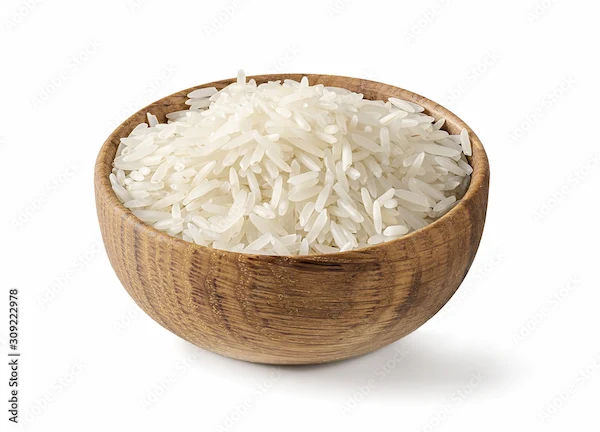Shunya Mudra: Benefits, Steps, and Impact on Health
Discover shunya mudra benefits, easy steps, and how this hand mudra yoga fits into healthy routines. Get safe, science-informed tips for daily practice.


Introduction
Shunya Mudra is a simple hand gesture from yoga that many people practice for calm, focus, and mindful breathing. If you’re curious about shunya mudra benefits or want to explore hand mudra yoga without complicated poses, this gentle practice can be a practical place to start. It’s easy to do anywhere, it takes only a few minutes, and it can support a broader routine of stress management and self-care.
Important note before we begin: There isn’t strong scientific evidence specifically for the health effects of Shunya Mudra. However, the mindful breathing and relaxation that often accompany this practice are supported by research on meditation and yoga in general. Think of Shunya Mudra as a simple tool that can help you slow down, breathe, and restore balance—not as a medical treatment or a substitute for professional care.
What Is Shunya Mudra?
Shunya Mudra is a traditional yoga hand gesture (mudra). In Sanskrit, “shunya” is often translated as “emptiness” or “space.” Like other mudras, it’s typically practiced while sitting comfortably and breathing slowly. Many people use it to enhance meditation or to bring a grounded, steady feeling to the mind.
While Shunya Mudra has roots in traditional yoga, modern health guidance focuses on its practical aspects: stillness, gentle hand positioning, and mindful breathing.
Shunya Mudra Benefits: What You Can Reasonably Expect?
When people talk about shunya mudra benefits, they usually describe how the practice makes them feel. Based on what we know from research on meditation and yoga in general, possible benefits include:
- Calmer mind in the moment. Slow, steady breathing can activate the body’s relaxation response and help reduce feelings of stress.
- Improved focus and awareness. A hand mudra gives you a simple “anchor” for your attention, which can make short mindfulness breaks more effective.
- A short mental reset during busy days. Even 5–10 minutes of quiet breathing can feel refreshing.
- Gentle hand mobility. Holding the mudra encourages you to notice hand and finger alignment. When practiced gently, this can support flexibility and comfort.
Health Topic Carousel:
Doctor Speciality: Dietetics
Text: Consult Top Specialists
What does science say? (and doesn’t):
Research strongly supports meditation and general yoga for stress reduction and well-being.
There is limited high-quality research specifically on Shunya Mudra or most individual hand mudras.
Any benefit you feel likely comes from the mindful breathing, posture, and intentional pause that accompany the mudra—helpful elements recognized across many health resources.
How to Do Shunya Mudra? Step-by-Step
Shunya Mudra is simple and can be done seated or standing. Here’s a clear, gentle way to practice:
Set up
- Sit upright on a chair or cushion with your back relaxed and tall. Place both feet flat on the floor if seated on a chair.
- Rest your hands on your thighs or in your lap.
Form the mudra with each hand
- Bend your middle finger so its tip touches the base of your thumb (the fleshy part below the thumb).
- Gently press the middle finger with your thumb to hold it in place.
- Keep your index, ring, and little fingers extended but relaxed—no strain.
Breathe and focus
- Close your eyes if comfortable.
- Inhale and exhale naturally through the nose.
- Keep your attention on your breath or on the sensation in your hands. If your mind wanders, gently bring it back.
Duration
- Start with 5 minutes and gradually build up to 10–15 minutes, once or twice a day.
- You can also use it for a 2–3 minute “reset” during stressful moments.
Tips to Get More from Your Practice
- Pair the mudra with slow exhalations. Try inhaling for a count of 4 and exhaling for a count of 6 or 8, if comfortable.
- Practice at a consistent time. Many people prefer mornings for calm or evenings to unwind.
- Make it comfortable. If your hands tire, rest and gently shake them out before resuming.
- Integrate with other calming habits. A short walk, light stretching, or quiet music can support relaxation.
Consult Top Specialists
How Shunya Mudra Fits into Hand Mudra Yoga?
Hand mudra yoga includes many different gestures, each with a traditional meaning. Shunya Mudra is one of these. Whether you’re new to hand mudra yoga or you already practice meditation, this mudra can be a useful, low-effort addition to your routine. It requires no special clothes or equipment and can be done almost anywhere. The key is mindful awareness and gentle, comfortable hand positioning.
Safety, Precautions, and When to Seek Care?
Shunya Mudra is generally gentle, but it’s still important to listen to your body.
Go gently if you have:
- Hand, wrist, or finger pain
- Recent injury, arthritis flare, or nerve issues (such as carpal tunnel syndrome)
- Numbness or tingling during practice
- Stop if you feel pain, tingling that doesn’t resolve, or dizziness. Rest your hands and return another time, or consult a healthcare professional.
- Not a medical treatment. While Shunya Mudra can support relaxation, it is not a cure for health conditions. If you have symptoms like persistent ear pain, severe headaches, dizziness, or hearing changes, seek medical evaluation.
- Combine wisely. If you already practice meditation or yoga, adding a mudra can be a nice complement. If you are pregnant, have cardiovascular concerns, or any chronic condition, check with your healthcare provider before starting new wellness practices.
How Often Should You Practice?
- Beginners: 5 minutes once daily
- Regulars: 10–15 minutes once or twice daily
- Busy days: 2–3 minutes as a quick grounding break
Consistency matters more than duration. It’s better to practice briefly every day than to practice for a long time once in a while.
Building a Simple Routine with Shunya Mudra
If you’re aiming to lower stress and feel more balanced, here’s a basic routine:
- Morning: 5–10 minutes of Shunya Mudra with slow breathing
- Midday: 2–3 minute mini-break using the mudra before a meeting or after a busy task
- Evening: 10 minutes of gentle stretching or a short walk, followed by 5–10 minutes of Shunya Mudra and quiet breathing
This structure balances movement and stillness, which many people find helpful for steady energy and calm focus.
The Science and the Tradition: Bridging the Gap
It’s common to read bold claims online about shunya mudra benefits. Traditional descriptions may attribute specific effects to certain mudras. Modern health organizations, however, emphasize evidence-based practices. At present:
- Strong evidence supports meditation, mindfulness, and yoga for stress management, mood support, and overall well-being.
- Evidence specific to Shunya Mudra or other individual hand mudras is limited.
- Practicing Shunya Mudra mindfully can still be useful because it helps you pause, breathe, and focus—key ingredients in many evidence-based stress-reduction techniques.
Practical Outcomes You Might Notice
- A few minutes of calm that helps you respond rather than react
- More awareness of posture and breath
- A small, portable tool to ground attention when life gets busy
These outcomes are modest and practical—and they align with what large health organizations recommend for managing daily stress.
Common Mistakes to Avoid
- Forcing the fingers. The mudra should feel gentle. If it hurts, ease off.
- Holding the breath. Keep your breath soft and natural.
- Expecting medical cures. Use Shunya Mudra to support well-being, not to replace medical care.
- Skipping consistency. Small, regular sessions are more effective than occasional long ones.
Who Might Benefit the Most?
- Beginners to meditation who want a simple focal point
- Busy professionals who need short, effective breaks
- Students who want a quick reset before studying or exams
- Anyone looking to add mindful awareness to daily routines
Consult Top Specialists
Consult Top Specialists

Ms. Sushma Jaiswal
Dietician
42 Years • M.Sc.(Food & Nutrition)
Bengaluru
Swasthya Nutrition, Bengaluru

Ms Malabika Datta
Dietician
19 Years • Bsc (Clinical Nutrition & Dietetics), Msc (Dietetics & Food Service Management)
Kolkata
Malabika’s Diet Clinic, Kolkata

Neelanjana J
clinical nutrition
3 Years • Bsc., Msc. Nutrition and Dietetics.
Bengaluru
Apollo Clinic, JP nagar, Bengaluru

Dr Darshana R
General Physician/ Internal Medicine Specialist
15 Years • MBBS, MD, DNB (Internal Medicine), Diploma in Allergy, Asthma and Immunology , Fellowship in Diabetes
Bengaluru
Apollo Clinic, JP nagar, Bengaluru
Ms Chetu Singhi
Dietician
20 Years • MSC Dietetics & Nutrition
Kolkata
RB Diagnostic - Dietician Diet2fit Chetu Singhi, Kolkata
Consult Top Specialists

Ms. Sushma Jaiswal
Dietician
42 Years • M.Sc.(Food & Nutrition)
Bengaluru
Swasthya Nutrition, Bengaluru

Ms Malabika Datta
Dietician
19 Years • Bsc (Clinical Nutrition & Dietetics), Msc (Dietetics & Food Service Management)
Kolkata
Malabika’s Diet Clinic, Kolkata

Neelanjana J
clinical nutrition
3 Years • Bsc., Msc. Nutrition and Dietetics.
Bengaluru
Apollo Clinic, JP nagar, Bengaluru

Dr Darshana R
General Physician/ Internal Medicine Specialist
15 Years • MBBS, MD, DNB (Internal Medicine), Diploma in Allergy, Asthma and Immunology , Fellowship in Diabetes
Bengaluru
Apollo Clinic, JP nagar, Bengaluru
Ms Chetu Singhi
Dietician
20 Years • MSC Dietetics & Nutrition
Kolkata
RB Diagnostic - Dietician Diet2fit Chetu Singhi, Kolkata
More articles from General Medical Consultation
Frequently Asked Questions
What are the real shunya mudra benefits?
Shunya Mudra may help you feel calmer and more focused, mainly because it encourages mindful breathing and a short pause from daily stress. While there isn’t strong research focused only on this mudra, meditation and yoga in general are linked with stress relief and improved well-being.
How long should I hold Shunya Mudra?
Start with 5 minutes and work up to 10–15 minutes, once or twice a day. You can also use it for a 2–3 minute reset during stressful moments.
Is Shunya Mudra safe for everyone?
It’s generally gentle. If you have hand or wrist pain, recent injury, numbness, tingling, or a condition like carpal tunnel syndrome, go slowly and stop if it’s uncomfortable. When in doubt, check with a healthcare professional.
Can Shunya Mudra cure ear problems or other specific health issues?
There’s no solid scientific evidence that Shunya Mudra cures medical conditions. If you have persistent or serious symptoms, see a healthcare provider. Use the mudra as a supportive relaxation practice, not a treatment.
How does Shunya Mudra fit into hand mudra yoga?
Shunya Mudra is one of many gestures used in hand mudra yoga. It’s easy to learn and pairs well with breathing and meditation. Think of it as a small, portable tool to help you focus and relax.




